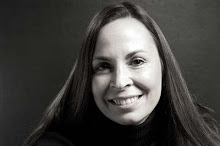Creativity can be loosely defined “as the process of producing something … original and worthwhile” (Sternberg, p. 468). However, I think creativity begins long before the process of “producing something” because the production of something is the by-product and physical manifestation of human thought processes. The creativity/production of something is often inspired by a problem or a need, so the creativity/production of something is often the answer to a problem, a resolution of a conflict, or it fulfills a person’s need to express a thought, a feeling or to make something known to others.
A creative person is someone who takes his or her knowledge and manipulates it. It is a person’s possession of knowledge and the manipulation of it that feeds the creator, so there is also a symbiotic relationship or process involved. Creators have dialogs within themselves, and these internal dialogs fuel the creative process. Also, creativity is collaborative. In my opinion, there is nothing “original”. Every creative endeavor is empirically built on previous creativity and creators use rational thought to create more.
One of the most important aspects of creativity is its beginning. For me, it begins with the ability to watch my thoughts (metacognition). When I watch what I am thinking, I am aware of my inspiration. Usually, inspiration comes from a divergent thought. If I judge the divergent thought to be worthwhile, I will become passionate about it and act upon it--applying my knowledge to bring the thought into three-dimensional reality. In essence, inspiration is the first step that begins a process of creativity.
According to Sternberg (2009), creative individuals are highly motivated, non-conforming, deeply believe in the value of their work, take risks, possess extensive knowledge about their subject, have profound commitment to their projects, take care in what they will focus their creative attention upon, and use both insight and divergent thinking in the process of creating. From my experience, this is a “bull’s eye” description and can be documented in a ten-year journey that resulted in a major work called “Jane Austen’s PRIDE AND PREJUDCIE, A Musical” (Baker & Jacobs, 2010).
The creation of this musical theater piece was inspired by the thought of adapting Jane Austen’s novel by the same name. Collaborating with my writing partner, we were highly motivated to create a musical that we wanted to see. Our goal was to inspire others to pick up a Jane Austen novel and read it. Through the process of writing this musical, we became Jane Austen scholars and now possess extensive knowledge about her life and works. We were profoundly committed to the project and took great care in our focus upon it. Through its Broadway option, the work transformed from a 3 ½ hour operetta to a 2 ½ hour Broadway show. This transformation was only possible by the great risks we took.
For me, the connection between creativity and emotions if that creative endeavors are the by-product of journeys inward. What this means is that as an artist, I examine myself as I create. These emotional reactions are what spark and fuel the energy needed to create the by-product or that "something original and worthwhile".
What I believe is that everyone has the capacity to create great things. A person only needs to be aware of what he or she thinks, be inspired by that thought, and then passionate about it because the passion is what fuels the action to make the creativity a reality. Creativity is a human process and everyone has that capacity.
References
Baker, L. W. & Jacobs, A. (2010). Jane Austen’s PRIDE AND PREJUDICE, A Musical. Retrieved from www.pride-prejudice-musical.com
Sternberg, R. J. (2009). Cognitive psychology (5th ed.). Belmont, CA: Wadsworth Cengage Learning. ISBN 9780495506294.
Subscribe to:
Post Comments (Atom)




No comments:
Post a Comment